Introduction
I received a notification on my Chinese entertainment feeds about the second season of “Exploring the Unknown with Wang Yibo,” which is set to premiere next week on November 28, 2025, on Tencent. Well, I haven’t watched the first season, and after checking it out, I ended up binging the whole series and loved it. I love travelling, and watching travel shows allows me to escape the monotony of daily life and experience the excitement of travel from the comfort of my home. Besides, I haven’t seen Wang Yibo in any drama or movie for a long time, so it’s good to watch him again doing what he loves to do.
This editorial article explores the interesting places in China that Wang Yibo and the team went to. Because I treated this show as a virtual travel, I researched the places to write this article, just in case you and I would like to visit in the future. What happened to Wang Yibo and what he learned along his adventure, you’d better watch the show yourself.
Let’s check them out!
Show Info
Show title: Exploring the Unknown with Wang Yibo (Native title: 探索新境·寻找王一博)
Alternative titles: Tan Suo Xin Jing Xun Zhao Wang Yi Bo
Genres: Adventure, Documentary
Aired: 31 Aug, 2024 – 6 Oct 2024
Episodes: 12 | Duration: 38 min.
Director: Cheng Er (程耳)
Where to watch: Tencent Video, HBO Max, and AppleTV
Watching note: There are two duration versions of this show. One is what I put above, the original version from Tencent. The HBO Max and the AppleTV versions are only 6 episodes, with a duration of 43 minutes each. Due to the time constraint, I only watched the short version. I’m not sure if the Tencent version has an English subtitle for the long version. If you’re interested in watching the long version, there is an unofficial fan sub on Facebook.
Trailer
Awards
- 2024 Weibo TV Conference Annual Recommendation: Most Popular Documentary.
- 2024 Weibo TV & Internet Video Summit Award: Annual Breakthrough and Innovative Work.
- 2024 Weibo Variety Awards: Most Popular Documentary of the Year.
- 2024 Tencent Video Golden Goose Honor: Annual Member’s Favorite Documentary
- 46th Annual Telly Awards (2025): Gold Telly Award for Documentary.
Summary
Brave explorers step into the unknown through survival challenges and adventurous journeys. They fear no danger and, by taking on these obstacles, hope to guide young people on how to explore the endless mysteries of the outdoors. (Source: HBO Max)
Hosts
Main Hosts

Wang Yi Bo (王一博)
Wang Yibo initiated and developed the documentary series Exploring the Unknown project. The series is built around his personal journey of facing challenges, overcoming fears, and reflecting on his own growth and resilience through these experiences. As he ventures into the unknown, the show emphasizes his determination and resilience as he learns survival skills and confronts new challenges.

Cheng Er (程耳)
Chinese mainland director, screenwriter, editor, and special interviewer in this show. He had in-depth conversations with Wang Yibo on topics such as growth, loneliness, and fear, allowing the audience to understand Wang Yibo’s inner world that had never been revealed, and jointly exploring the growth of a young man.
Cheng Er is also the director of the movie Hidden Blade (无名), in which Wang Yibo starred.
Episodic/Location Hosts

Xing En Xue (邢恩雪)
Discovery Channel’s explorer and jungle survival skills expert.

Zhou Peng (周鹏)
Discovery Channel’s explorer and winner of the Asian Piolet d’Or Award (a mountaineering award that recognizes outstanding achievements by Asian climbers).

Wang Hao (王浩)
Discovery Channel’s explorer, who focuses on cave exploration.

Zhou Fang (周芳)
Discovery Channel’s explorer, natural documentary director, and senior underwater photographer.
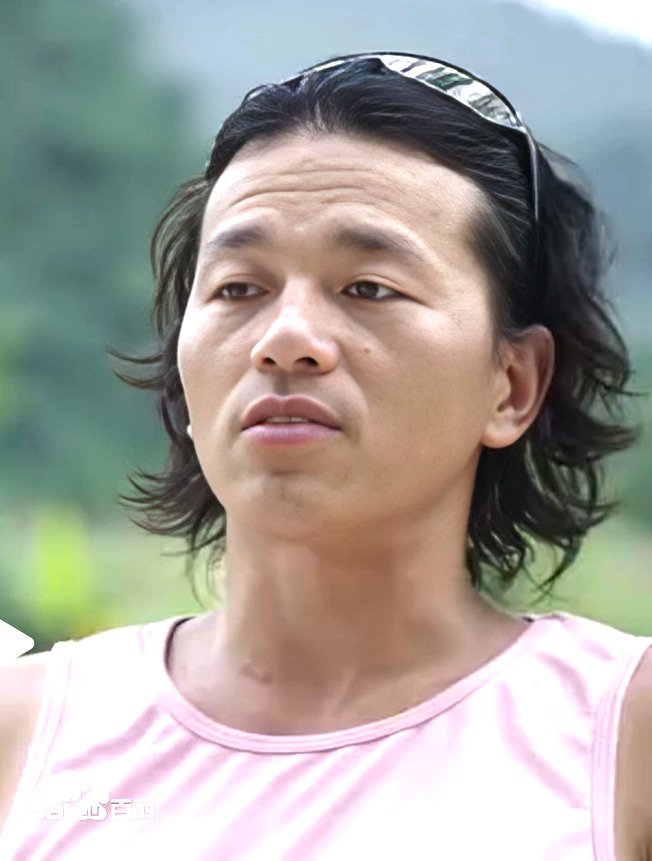
Liu Yong Bang (刘永邦)
Discovery Channel’s explorer, rock climber, and rock climbing instructor.

Wu Xin Lei (吴鑫磊)
Discovery Channel’s explorer, a former member of the French Special Forces, and a desert survival expert.
My Rating
Since I rarely watched reality TV shows, let alone documentaries, I really didn’t know how to rate this show. My rating for this show was based on MyDramaList’s scoring system, which is from 0.0 to 10.0. I gave a minimum rating of 6.0 to appreciate the hard work of the production team, and to adjust to MyDramaList’s overall score base. From 6.0, this drama has additional scores of:
1.0 for the theme, especially Director Cheng Er interviews with Wang Yibo, to explore his mental journey and personal growth when he participated in the program.
1.0 for the hosts: Wang Yibo as the initiator of the program, and the six top Chinese survival and outdoor experts.
1.0 for the breathtaking scenery of remote China.
My final rating is 9.0/10.
Destinations
Hainan Tropical Rainforest National Park
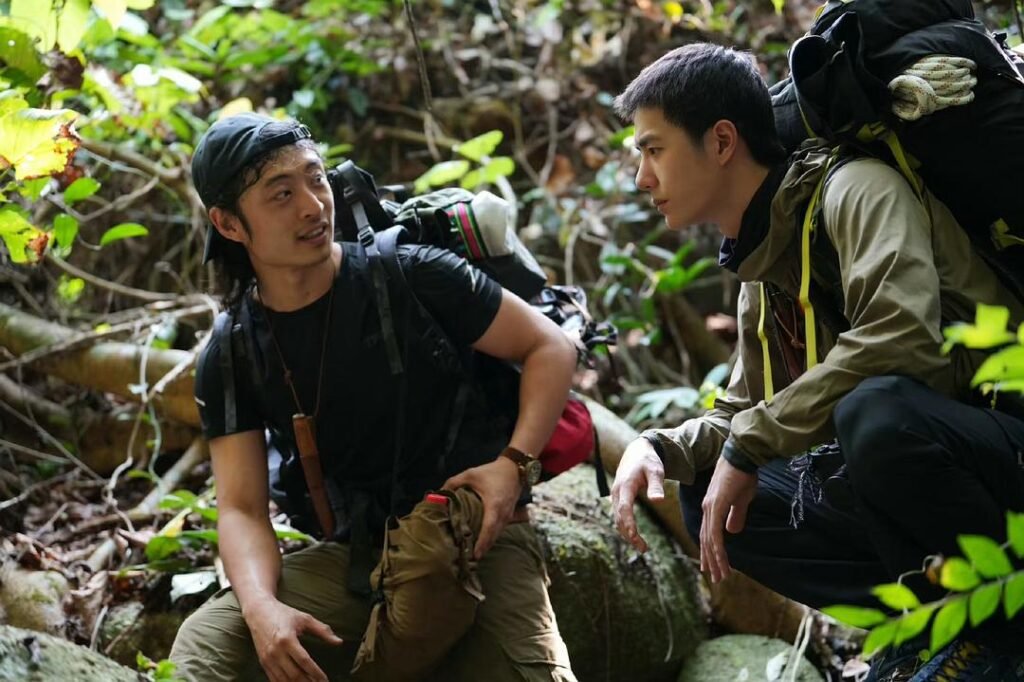
Xing Enxue and Wang Yibo
Hainan Tropical Rainforest National Park is a national park located in the mountainous area of central and southern Hainan Island, China. The national park includes five national nature reserves (Wuzhishan , Yinggeling, Jianfengling, Bawangling, and Diaoluoshan), three provincial nature reserves, four national forest parks, six provincial forest parks, and related state-owned forest farms. The natural reserve where Wang Yibo, Xing Enxue, and the team went is Bawangling.
Wang Yibo and Xing Enxue came to Bawangling to find the traces of Hainan gibbons. The Hainan black-crested gibbon (Nomascus hainanus), also called the Hainan gibbon, is a critically endangered species of gibbon found only on Hainan Island. Did they find one? Yes, and this was their photo:

Can we visit here? Yes, you can visit the National Park, which is a large and biodiverse area with multiple access points and attractions. Visitors can explore different trails, experience the local Li ethnic culture, and enjoy the scenery, but it is recommended to be prepared for the humid environment and wear appropriate gear. The best season to visit is from November to April to avoid the typhoon season. Check out the website (in English): Hainan Tropical Rainforest National Forest.

Wang Yibo met Zhou Peng
Gangshika Snow Mountain in Qinghai
Gangshika Snow Mountain is a 5,254 m (17,238 ft) high mountain peak in the eastern Qilian Mountains of northeastern Qinghai province. The mountain possesses a popular climbing route via its glaciers. Since it’s a popular climbing site, you can definitely visit the mountain. Fly to Xining and then take a bus, high-speed train, or self-drive to Menyuan County. From there, you can access the mountain via a private vehicle or a local bus and taxi.
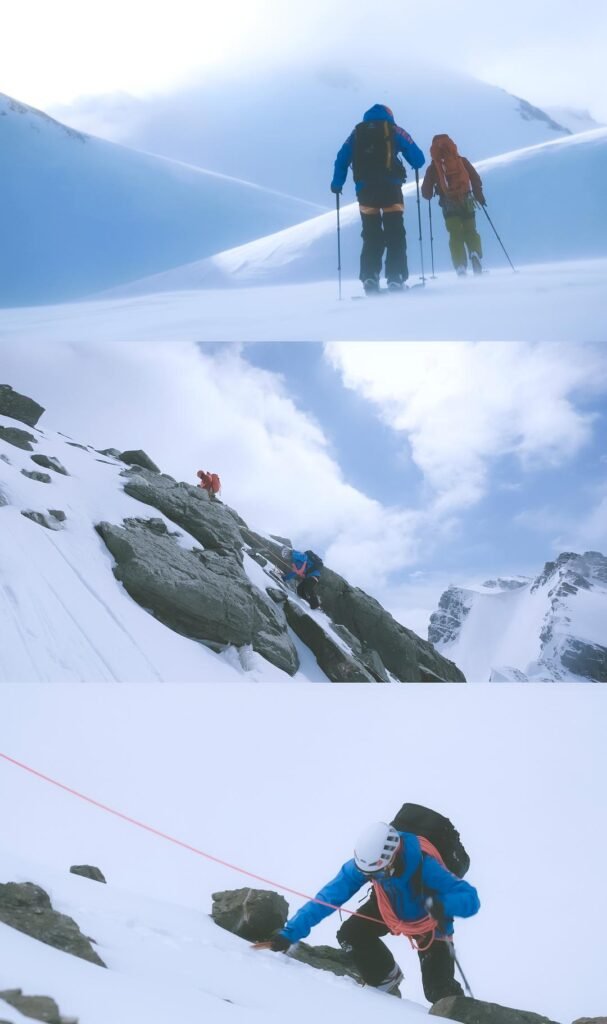
Zhou Peng guided Wang Yibo to climb the snowy mountain
Be prepared for a high-altitude environment by bringing warm, waterproof gear and wind protection, as well as essentials like sunscreen and food. July to September is recommended for clear views of the snow peaks and green meadows.
Before your trip, confirm whether any permits are required for camping or other activities, especially if you are a foreigner. Better yet, ask Chinese hiking and expedition operators, for example, Beijing Hikers. I don’t make a promotion. I found this company on TripAdvisor, and it had a good rating and reviews.

Wang Yibo and Wang Hao had a meal together inside the cave
Cave Exploration in Guilin, Guangxi
Guilin is one of China’s most popular tourist destinations. It’s located in the northeast of China’s Guangxi Zhuang Autonomous Region. The city known for its dramatic landscape of limestone karst hills.
Guilin, Guangxi, offers numerous cave exploration opportunities, with the most famous being the Reed Flute Cave, known for its colorful lights and karst formations. Other notable caves include the Silver Cave and Crown Cave. Visitors can find guided tours for both popular, well-lit caves and more primitive, unlit cave experiences.
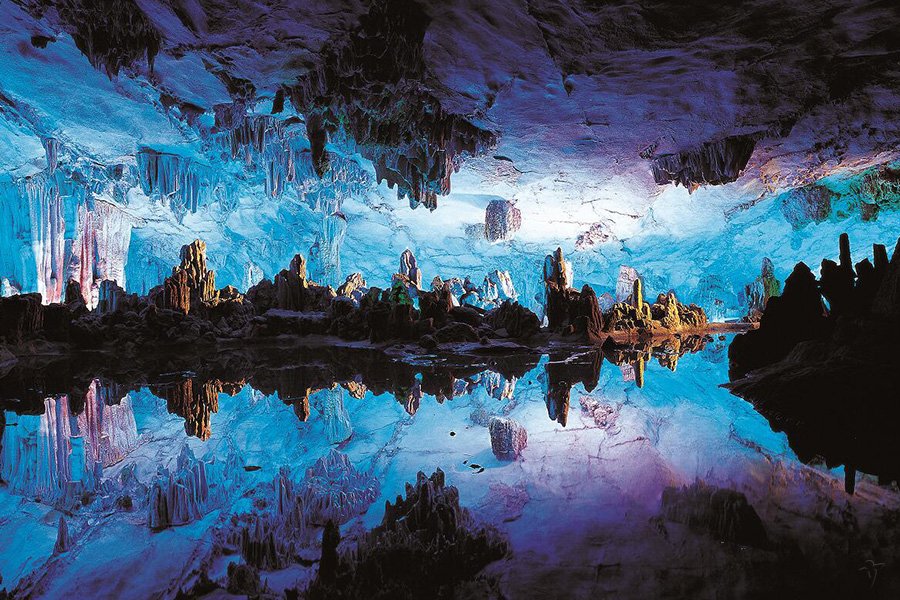
Reed Flute Cave (Ludi Yan). Credit: Visit Our China
- Reed Flute Cave (Ludi Yan): A highly popular, illuminated limestone cave famous for its natural sculptures and historical inscriptions. Its name comes from the reeds that grow outside, which can be used to make flutes.
- Silver Cave: Another popular limestone cave known for its spectacular formations, which are illuminated with colorful lights.
- Crown Cave: A cave accessible via a riverboat tour and known for its impressive karst scenery.
The three above caves are extremely popular. Some caves, like the Reed Flute Cave, have well-established paths and do not necessarily require a guided tour, though they can enhance the experience. If you want to use a guided tour, it is recommended to book your cave tours in advance, especially if you plan to visit during peak season. The best times for cave exploration in Guilin, Guangxi, are spring (March to May) and autumn (September to November), as they offer pleasant weather with comfortable temperatures and clear skies.
Of course, the cave exploration that Wang Yibo did was an extreme one in the unknown Fishbone Cave. For a more rugged adventure, a professional is needed to explore the unlit depths of primitive caves, which allows for the discovery of natural karst formations.

Zhou Fang trained and guided Wang Yibo to dive and take underwater photos.
Free Dive In the Ocean (Zhuhai Region)
In this part, the exact diving spots are undisclosed, although they started from Wailinding Island to smaller islands for training, camping, and diving. Wailingding Island itself is a picturesque retreat located in the Zhuhai region of China. Although visitors can scuba-dive in this island, for free diving, especially underwater photography, divers have to go to smaller islands which are quieter.
Let me tell you what happened to Wang Yibo during his diving training, indicating the importance of proper training by a professional trainer and a determination to keep going and not be discouraged. Adapting to the ear pressure balance is a very important part of free diving training. It can effectively help divers reduce ear pain caused by increased water pressure. However, Wang Yibo, who had never dived before, could not master the skills of ear pressure balance at the beginning. To make matters worse, he also experienced a headache, forcing him to go ashore to rest and suspend practice.
Wang Yibo finally not only managed to overcome the adaptation challenge, but also accompanied Zhou Fang to take underwater photos. The heavy camera, his poor physical condition, and the fear that could not be ignored all made the challenge of night diving full of variables. In the end, Wang Yibo could only take a picture of a tiny blue fish, but he was really proud of it.

Rock Climbing in Sifang Mountain, Yangshuo

Liu Yongbang taught Wang Yibo rock climbing first at a climbing gym.
Sifang Mountain is a climbing area located in Fenglou Village, Gaotian Town, Yangshuo, China, known for sport climbing routes. The general area is famous for its dramatic karst mountain scenery, which draws tourists for hiking and outdoor activities, such as the challenging hikes up to viewpoints for panoramic views of the region.
You probably were not up to extreme sport rock climbing, like Wang Yibo did. In general, Yangshuo region is a hub for outdoor activities like hiking, kayaking, and caving. Spring or fall are recommended for cooler, drier weather, avoiding the hot and humid summers and potential flooding during the rainy season.
If you are traveling to the Yangshuo area, the surrounding landscape is indeed characterized by stunning mountains and outdoor activities. Popular mountain-related activities and viewpoints in the Yangshuo area include:
- Laozhai Mountain: Located in the ancient town of Xingping, this offers an iconic view of the Li River and surrounding karst peaks.
- TV Tower Hike: A hike within walking distance of West Street in Yangshuo town that provides great panoramic views.
- Xianggong Mountain: Known for its sunrise views of the Li River bend.
- Ruyi Peak: Features a cable car for accessibility and views of the surrounding area.
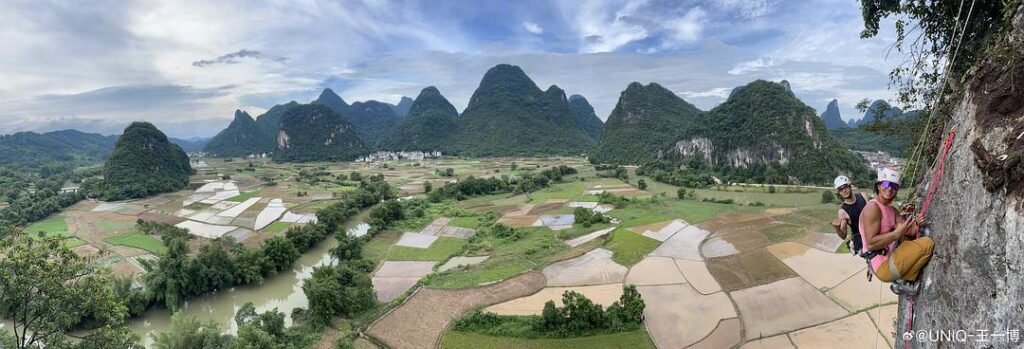
The karst mountains as the breathtaking background scenery
Birutu Peak in the Badain Jaran Desert in Inner Mongolia
Birutu Peak, some call it Bilutu Peak, is the tallest stationary sand dune in the world, located in the Badain Jaran Desert in Inner Mongolia, China. It has a relative height of about 500 meters (1,600 ft) and an altitude of approximately 1,611 meters (5,285 ft) above sea level. Known as the “Everest of the desert,” its summit offers panoramic views of the surrounding dunes and the desert’s famous inter-dunal lakes.

Wu Xinlei taught Wang Yibo how to survive in the desert.
At the end of the adventure, Wang Yibo’s mission was to climb Birutu Peak, the desert Everest, alone to watch the sunrise. Before that, Wu Xinley taught him everything for desert survival: identifying directions, dealing with emergencies during sandstorms, rafting, fetching water, collecting firewood, starting fires, and fishing.
Wang Yibo challenged to climb Birutu Peak. He stumbled all the way and worked hard toward the top of the mountain alone in the silent morning. Although he failed to see the moment when the sun rose, he also saw the magnificent beauty of the desert in the morning. He insisted on not giving up all the way and went straight to the top. No matter how many turns, how many slopes, and how many slopes this road has climbed, as long as it is accurate, it will arrive.

Alright, we might never have had a chance to test our survival skills in the desert, but watching the sunrise at the desert top, as shown in the above images, looks thrilling. Can we go there?
Situated in the Alashan Plateau of Inner Mongolia, China, the Badain Jaran Desert is the third-largest desert in China and is known for its unique combination of towering sand dunes and mysterious lakes. To access the best viewpoints, it’s necessary to take a guided tour, which typically involves a jeep ride through the dunes. To watch the sunrise at Birutu Peak in the Badain Jaran Desert, as part of an overnight tour that typically includes a visit to the peak for sunset and an early morning return to the summit for sunrise. The sunrise is described as a spectacular display of light and shadow as the sun’s golden glow illuminates the sand dunes. You can also watch sunset over the dunes via a jeep ride, sometimes with reflections in the nearby lakes. The best time to visit the Badain Jaran Desert is during the late spring and autumn months, from May to October. During this period, the weather is generally pleasant with warm days and cool nights, making it ideal for exploration. Again, it’s not a promotion, but I found online a tour company that can take you there, Anywhere China.
Conclusion
Well, I might not travel to those remote places in China, especially when doing extreme sports such as rock climbing and diving, which definitely require prior learning and training. However, since I enjoy traveling, watching extreme outdoor shows such as Exploring the Unknown with Wang Yibo shares psychological motivations such as a desire for novelty and stimulation, stress reduction, the thrill of adventure, and the pursuit of personal growth. The messages are universal, including the importance of facing fear of the unknown, embracing challenges to discover one’s potential, finding inner peace in solitude, and respecting the wonders of nature.
Next week, Season 2 is set to premiere on 28 November 2025, see the official poster below. Exploring the Unknown with Wang Yibo Season 2 will focus on North America, with Wang Yibo going on a rock climbing road trip through the continent. The show will include extreme sports like rock climbing, cycling, hiking, and mountain biking, while also experiencing local cultures.
Well, I’m not interested in rock climbing, and I’m somewhat familiar with North American cultures. However, if I come across a good subtitle, I may cover the second season of this series. What do you think?




